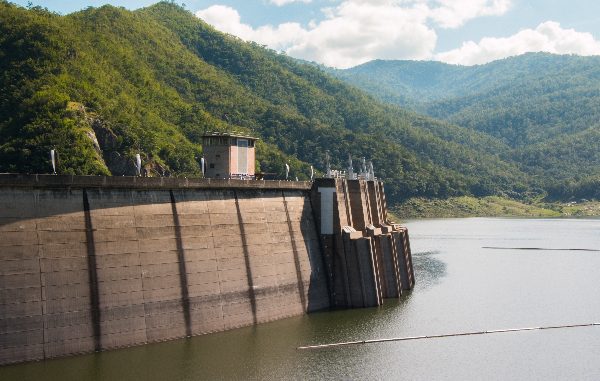
Peru’s hydroelectric development shapes its energy sector, positioning itself as a leader in renewable energy in South America. Peru has harnessed hydropower to meet growing electricity demands, reduce carbon emissions, and drive economic growth. Hydropower accounts for 47.72% of Peru’s electricity generation. The reliance on hydropower is crucial in reducing greenhouse gas emissions and promoting sustainable energy practices. Peru’s total electricity generation reached 63,365 GWh. The focus on hydropower provides a stable and reliable source of electricity, which contributes to the country’s energy independence and resilience against global energy market fluctuations. Continued focus on expansion and diversifying renewable energy sources is crucial for meeting future energy demands and environmental objectives. Corona rings play a role in high-voltage equipment in transmission lines, transformers, and switchgear connected to hydropower plants.
At high voltages the electric field around conductors can ionize the air, causing corona discharge. Corona rings distribute the electric field evenly to reduce concentrated charges that lead to energy loss and equipment damage. They are installed on bushings and insulator strings to prevent erosion from ionized air. This is crucial in extending the lifespan of the critical components in Peru’s humid environments. Corona discharge wastes energy and generates radio frequency interference, which can disrupt control systems in hydroelectric plants. The rings also ensure stable power transmission from remote hydropower stations. Peru’s hydropower plants are in high-altitude regions where thinner air increases the risk of corona discharge. Corona rings are often large in diameter to manage the electric field. Using corona rings ensures reliable electricity export from hydropower-rich regions and reduces maintenance costs in harsh climates.
Functions of corona rings in Peru’s hydroelectric stations
Corona rings are metallic ring-shaped devices mounted on high-voltage terminals and insulators of electrical infrastructure. They help distribute the electric field across insulators and terminals and prevent corona discharge. Corona rings are essential components for high-voltage equipment safety and efficiency. They protect hydroelectric equipment from environmental and electrical stress, ensure uninterrupted flow, and extend the lifespan of costly high-voltage assets. Here are the roles of corona rings in Peru’s hydroelectric stations.

- High-altitude power generation—corona rings mitigate the discharge effect by spreading the electrical field and reducing hotspots on terminals. This is crucial for the San Gaban hydro plant, where the air density is lower and the breakdown voltage is minimal. It is crucial in maintaining the reliability of power lines and transformers exposed to harsh mountain environments.
- Protecting insulation systems—hydroelectric plants depend on outdoor insulators, which face rain, humidity, and pollutants. Corona rings help extend the service life of bushings, switchgear, transformers, and other high-voltage apparatus by reducing stress.
- Ensuring grid stability—corona discharges can cause radio interference, power leakage, and thermal damage. Corona rings ensure clean power transmission and help maintain voltage stability.
- Compliance with international standards—partnerships to develop these projects in Peru need infrastructure to meet standards. The use of corona rings in substations and transmission lines aligns hydroelectric development with best practices.
Measures and strategies put in place to address challenges during plant development
The San Gaban hydroelectric plant in Peru faced various challenges during its development. These challenges included terrain, environmental sensitivity, and social dynamics. There were several measures and strategies put in place to ensure the success of the construction and sustainable operation. These measures and strategies include

- Advanced engineering and construction techniques—mountain tunnel systems helped to divert water to the power station without major ecological disruption. The project included a low dam and a long water diversion tunnel.
- Environmental safeguards—this included environmental impact assessments conducted and integrated into the design. There were also measures to preserve aquatic biodiversity and maintain ecological flow in the San Gaban River.
- Community engagement and social investment—the developers collaborated with local communities to integrate their feedback into project planning. There were also cultural initiatives to strengthen the bond between workers and indigenous populations.
- Logistics and local sourcing—heavy equipment and materials was transported through custom-built access roads designed to reduce disruption. Local labor and materials were used to boost the regional economy and reduce logistical delays.
- Safety and technical resilience—redundant power systems and real-time monitoring helped to ensure grid stability and fast response to issues. Corona rings, surge protectors, and reinforced insulators served in electrical components to withstand high-altitude electrical stress.